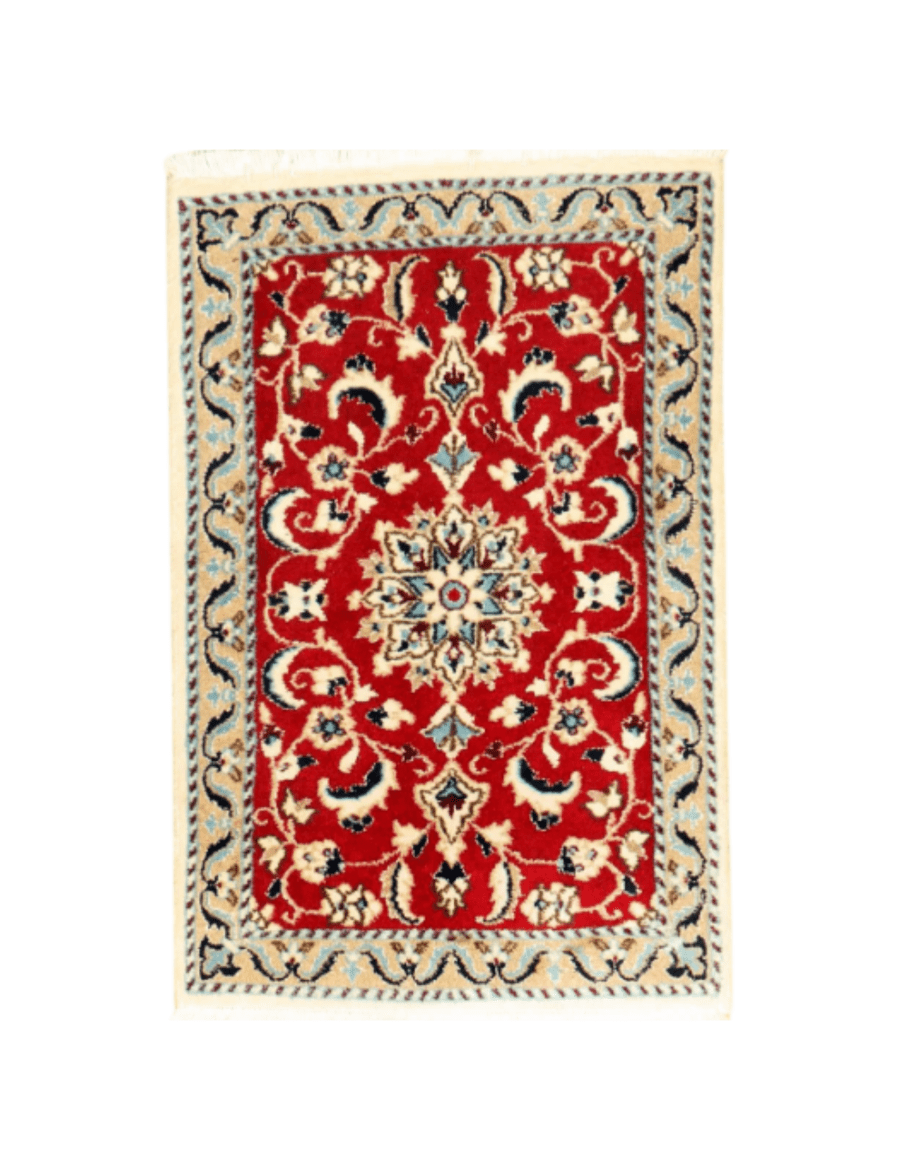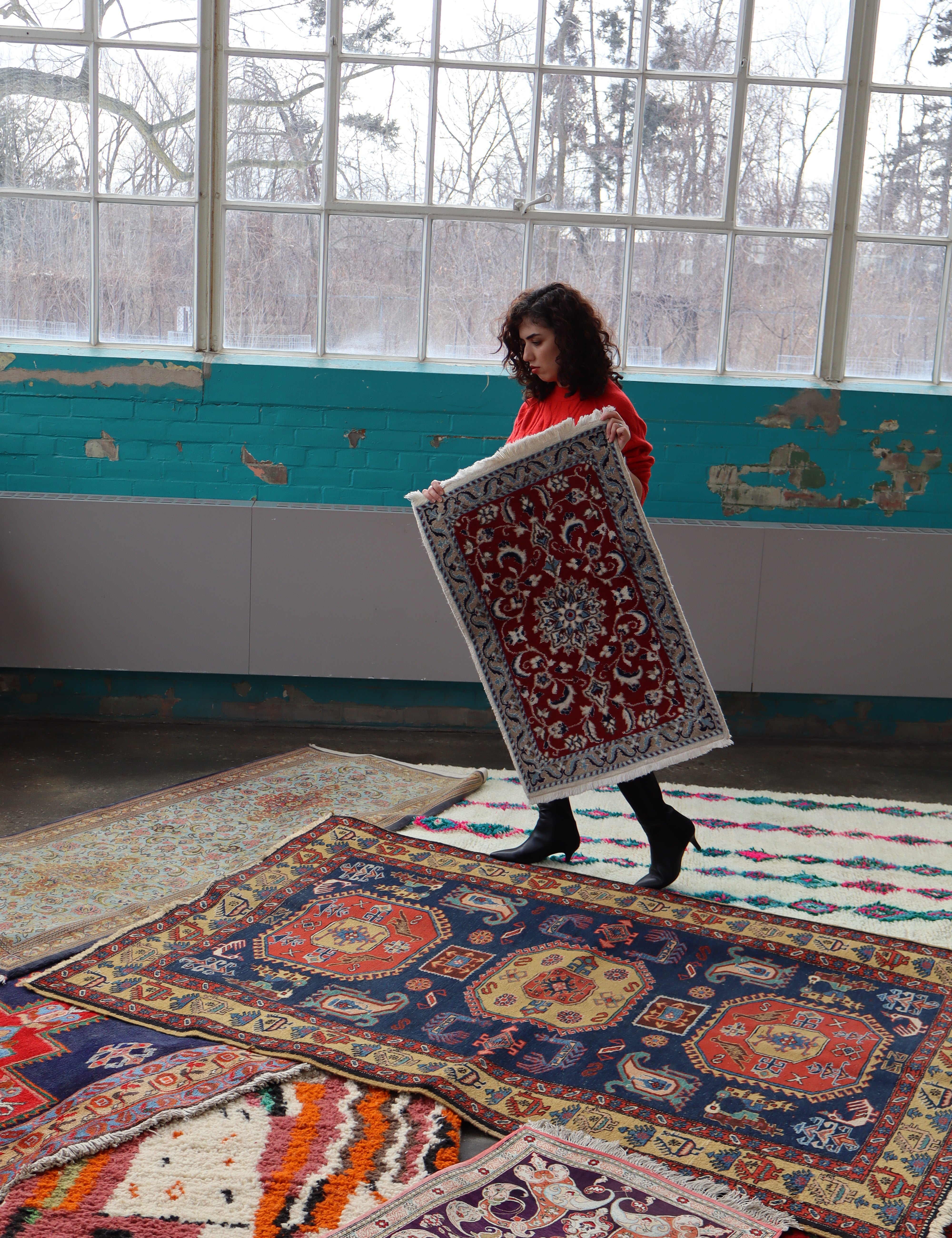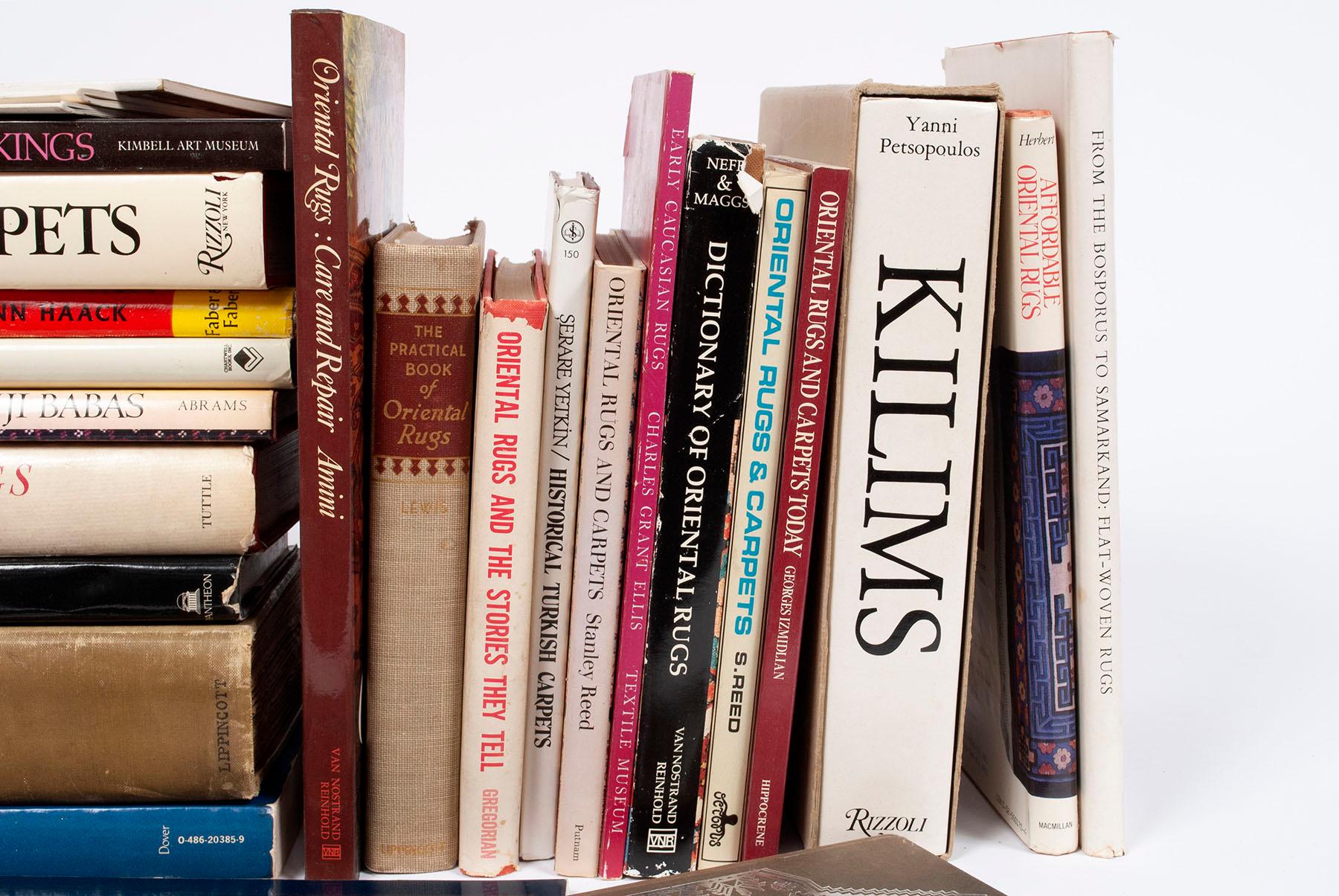Naeen carpets (also spelled Nain) are famed for their superb materials and fine craftsmanship. Revered by carpet enthusiasts, these rugs stand out for their flawless weaving, precise symmetry, and soft, harmonious colors.
Originating from the desert edge city of Naeen in Iran, they represent relatively recent yet remarkable contributions to Persian rug heritage.
In this guide, we’ll explore the history of Naeen rugs, their distinctive designs and color schemes, and the special features that make them so coveted.

View of Narin Castle in Naein, an ancient structure believed to date back to the Parthian or Sassanian era, likely used as a fire temple.
A Desert City Turns Master Weaver: Brief History of Naeen Carpets
Nain sits on the western fringe of Iran’s great Dasht-e Kavir, about 200 km east of Isfahan. For centuries it wasn’t known for carpets at all—its claim to fame was the aba: a finely woven wool cloak.
When industrial mills undercut traditional cloak-weaving in the early 20th century, many of Naeen’s master spinners and loom workers faced a crossroads.

Scenic view of Dasht-e Kavir desert in Iran with golden sand dunes at sunset.
Instead of letting that skill vanish, they retooled for carpet weaving (circa late 1930s–1940s). Their background with ultra-fine yarns and exacting handwork translated beautifully to rugs.
Early Naeen pieces stunned Tehran dealers with their fineness—reports from the time mention specimens in the hundreds of knots per square inch, extraordinary by any standard.
In the 1940s they borrowed patterns from established centers—Bakhtiari panels, Isfahan-style medallions, Yazd florals—while perfecting their own warp, weft, and finishing methods.

Traditional Aba weaving in Naein, where artisans hand-weave cloaks entirely in one piece from camel or sheep wool. These garments are especially valued in cold weather for their warmth and insulation.
By the 1950s–60s Naeen had found its voice: crisp curvilinear medallions, silky outlines, and a calm, “cool” palette of creams and layered blues.
The influence of nearby Isfahan remained visible, but Naeen’s handling of line, negative space, and color harmony became unmistakable.

The “La” System Explained (4-La, 6-La, 9-La)
One reason Naeen rugs confuse buyers is the local grading system based on yarn ply, called La (“layer/ply” in Farsi). Fewer plies = thinner yarn = potential for higher knot counts.
-
9-La (No La): the thickest yarn used in Naeen. Still fine by Persian standards, often the entry point for Naeen quality.
-
6-La (Shish La): the classic “sweet spot,” combining high fineness with practicality and value.
-
4-La (Chahar La): the connoisseur grade. Extremely thin yarn allows very high knot densities and spectacular drawing; typically workshop or master-level pieces.
In practice, a good 6-La might land roughly in the ~200–390 kpsi range (about 300k–600k knots/m²), while 4-La pieces can push much higher. The La number often correlates with price because it maps to labor intensity, eye strain, and the weaver’s skill.

Tip: Some dealers “count” La by untwisting a fringe bundle to see how many strands make each warp or by inspecting the fineness of lines in the drawing. Signatures and workshop reputation also matter (see below).
Design Language: Classic Persian Forms, Naeen Precision
Naeen’s repertoire pulls from Safavid-era elegance but renders it with surgical clarity.
-
Medallion & Corners (Lachak-Toranj / Shah Abbasi): Rounded or scalloped central medallions, quarter-medallions in the spandrels, and flowing eslimi (arabesques) and khataei (lotus/peony) vines.
-
Afshan (All-over floral): A continuous field of scrolling vines and Shah Abbasi palmettes, used less often than medallions but beautiful in larger formats.
-
Vase & Tree-of-Life Variants: Symmetric bouquets rising from ornamental vases; occasional arboreal layouts with birds and animals in fine detail.
-
Hunting & Pictorials (select commissions): Mounted hunters, deer, and felines among foliage—miniature-like drawing benefits from Naeen’s knot density.
-
Panel / Ceiling (Dome) Inspirations: Garden-style compartments or medallions that echo mosque domes and stucco ceilings with concentric layers.
What sets Naeen apart is how the line reads: outlines are hair-thin and confident, curves are genuinely curved (not stair-stepped), and the negative space is used to “air out” complex motifs so they never feel crowded.

Color Aesthetics: Cool, Calm, and Architectural
If you remember just one thing about Naeen color, make it this: cream and blues. Dyers in Naeen favor a “cool” register—tones that read serene rather than flamboyant.
-
Fields & Grounds: ivory/cream or soft powder blue; sometimes a darker navy field to frame lighter motifs.
-
Blues in Layers: pale sky, light turquoise, steel, then navy for drama in the border or medallion.
-
Accents: pistachio/grey-green, beige/sand, and the occasional camel. Pure reds are rare (if present, they’re used sparingly as tiny accents).
Designers often use intentional contrast—for example, an ivory field with a navy border and medallion—to “picture-frame” the composition. Naeen palettes lean toward uniform dye lots (limited abrash) to preserve a sleek, tailored look.

Structure & Materials: Why Naeen Feels So Refined
A Naeen rug’s elegance comes from choices at every structural step.
Knot & Density. Naeen weavers use the asymmetrical Persian (Senneh) knot on cotton warps and wefts, with double wefts between rows to compact the structure. Even mid-grade Naeens have excellent legibility; fine 6-La and 4-La pieces can be tapestry-like.
Silk Highlights (“Gol Abrisham”). Many Naeens outline traceries and petals with silk. The tonal shimmer around ivory lines makes motifs “pop” under daylight—one reason Naeen drawing photographs so well.
Wool & Pile. Expect very fine, lustrous wool—often kork (lamb’s neck/back)—cut low and even. The low pile sharpens motif edges, resists footprinting, and gives a surprisingly silky hand for a wool rug.
Edges & Ends. Finishing is typically completed on the loom: short, neat fringes anchored with a small kilim or overcasting; side cords firmly overcast in matching tones. Many authentic pieces display a subtle blue band before the fringe—an atelier signature flourish.
Sizes and Formats
You’ll find Naeens in sizes from 2×3 ft (prayer/entry) up to palace formats (12×18 ft and larger). The most common are room sizes—6×9, 8×10, 9×12—where the medallion and corners breathe. Runners exist (more in contemporary production), but Naeen’s classic vocabulary sings best on a wider canvas.

Close-up of a central medallion and floral motifs on a Naein carpet with soft pastel colors and symmetrical design.
Signatures, Workshops, and the Habibian Name
Like Isfahan and Qom, Naeen has standout workshops. The most famous is Habibian—Fatollah Habibian is often called the father of Naeen carpets. Borders may include a woven cartouche with حبیبیان (Habibian) or the city name نایین (Naeen). Signed 4-La/6-La Habibian pieces are highly collectible and set the standard for design clarity and finish.

Iran Habibian Naeen Signature
Authenticity & Buying Notes (Without Killing the Romance)
-
Read the Line Work: True Naeens draw curves as curves; fakes look pixelated or “blocky” at tight turns.
-
Handle & Sheen: Fine kork wool with silk outlines has a crisp, cool hand and quiet luster—dull wool is a red flag.
-
Palette Discipline: Creams and layered blues dominate; big red fields are atypical.
-
La & Price: If a rug is labeled 4-La but priced like a 9-La, be skeptical. The La number should be consistent with drawing finesse and density.
-
Provenance: Reputable dealers, workshop signatures, and coherent finishing details (fringe, side cords, back view) help confirm origin.
Care and Longevity
A tightly woven Naeen with low pile wears extremely well. Regular vacuuming (no beater bar on fringes), rotating annually, and a professional hand-wash every few years will keep colors bright and outlines crisp. Silk-outlined motifs benefit from careful, pH-appropriate cleaning.
How Naeen Rugs Live in a Room
Naeen rugs don’t shout; they stage a space. The medallion pulls a seating group together; the palette flatters stone, wood, and neutral upholstery; and the line work rewards close viewing. In contemporary rooms, a cream-and-navy Naeen adds heritage without heaviness. In classic interiors, it harmonizes with carved wood, plaster, and brass.

Conclusion: An Oasis of Refinement in Persian Weaving
Naeen carpets are a triumph of adaptation—cloak weavers who redirected mastery into a new medium and, within decades, set a national benchmark for finesse. Their signatures are unmistakable: serene palettes, impossibly clean drawing, and construction that marries delicacy with durability. Whether you’re a collector chasing a signed 4-La or a homeowner who wants quiet luxury underfoot, a fine Naeen brings the best of central-Iranian taste into daily life—endlessly elegant, thoroughly livable, and unmistakably Persian.












Leave a comment